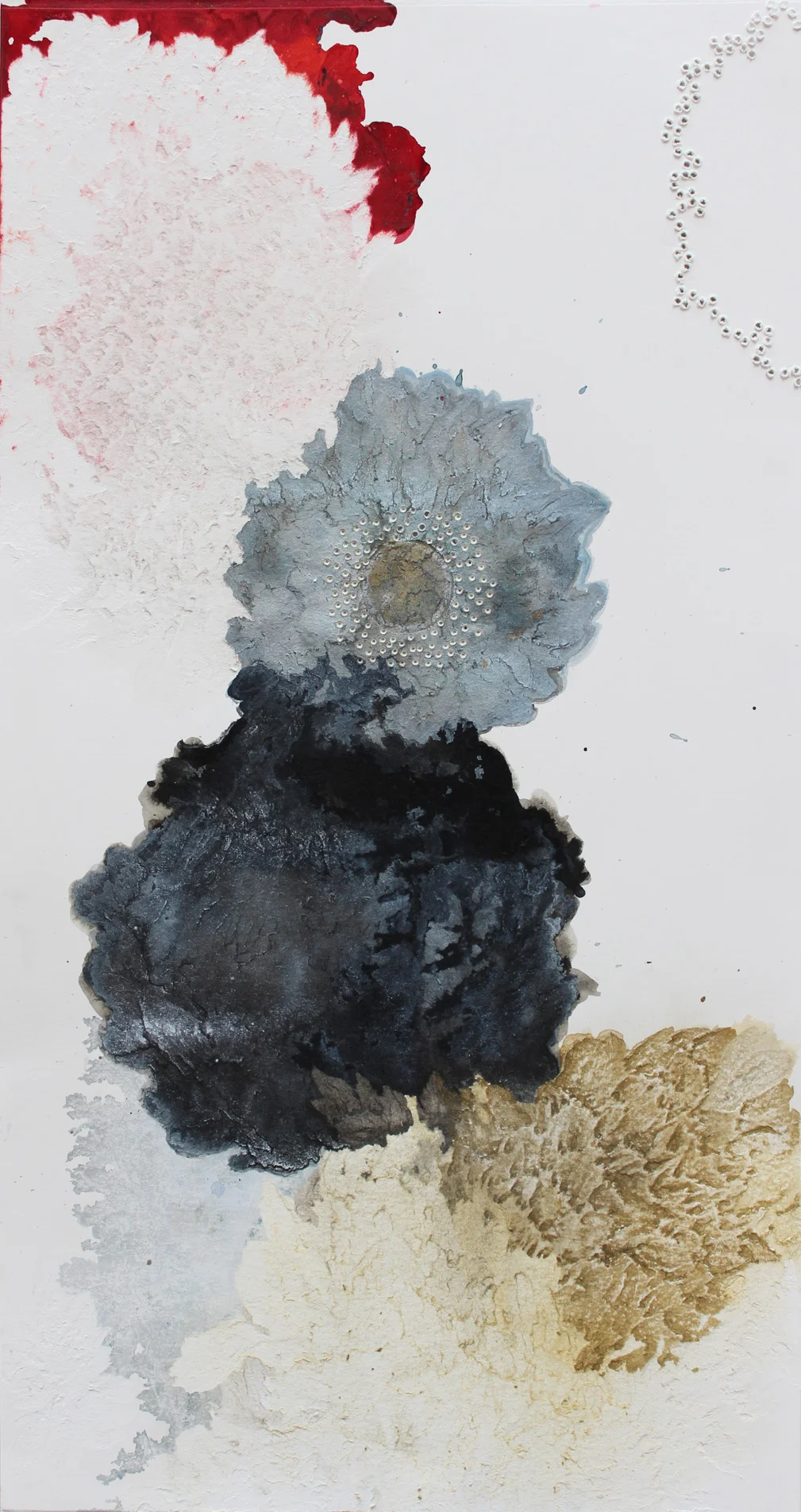Protected 2016
exhibition at Flinders Lane Gallery 19 Jul - 6 Aug, featured on The Jealous Curator blog Jul 2016
The recent floods in Tasmania caused an unexpected response from its arachnid population. Deprived of their earth-based sanctuaries and food supply, spiders in their millions enveloped whole forests with their webs creating a Christo-like phenomenon of web-shrouded canopies hovering above the raging waters. In their desperation for survival, they inadvertently created a vision of weird gothic majesty, ethereal, fragile and breathtaking to behold. Earlier this year, whilst traveling through the South Island of New Zealand, Melinda Schawel encountered a similar sight though on a far more intimate scale. For miles around, bushes appeared to be wearing cotton gloves on their extremities, scattered and fluttering like the whitecaps on a windswept lake. These revealed themselves to be the work of the Nursery Web spider who weaves these enclosures as protection for their young, not as a trap for the unwary.
For an artist who holds the sanctity and safety of her family close to her soul, these natural responses to external forces struck a resonant chord. Having spent many years traveling, Schawel and her husband have now built a bushland sanctuary in outer Melbourne, raising their children in one protective nest rather than moving them all around the world. This solid base has also allowed Schawel an extended period of steady focus resulting in artworks of great depth, skill and contemplation. At the same time, the incipient dangers of the outside world are still ever present, courtesy of the artist’s keen interest in podcasts dealing with the best and worst that humanity can offer.
It can be grim – no question of that – but like all fearful experiences, darkness is usually followed by some semblance of light. In Schawel’s case, her trepidation stimulates distinctive and extraordinarily nuanced mark-making which become mediations on the nature of paper as much as they are concerned with Nature itself. Her current technique is one born of accident (the unexpected tearing of an over-worked surface during an earlier project) but once an accident is saved within an artwork, it should more accurately be described as editing. For such a gently pliable surface as paper, Schawel employs some surprisingly tough love via drills, scalpels and sanding. She starts with an extremely thick 640-gram weight paper which allows her to cut and peel distinct ridges and valleys resulting in a low bas-relief surface. Inks and fluid acrylics are painted onto the torn surfaces and also poured then dispersed into organic shapes using plastic sheets. The resultant pigment passages are either opaque and glossy or diluted and washed, ghostlike traceries that recall the spiders’ webs of their original inspiration. There is an inevitable association with nests (Schawel’s protective instincts at play) but also of undersea creatures, sponges, urchins and the like. This is not so surprising as she also expresses delight at the patterns formed on inter-tidal beach zones by the discarded balls of sand left by Sand Bubbler crabs. These forms find their own way into the artist’s work through clustered drill holes resembling celestial star maps. Travelers have used stars for millennia to guide them to sanctuary and in these works, it is easy to recognise that Schawel now is doing the same.
Andrew Gaynor 2016





















